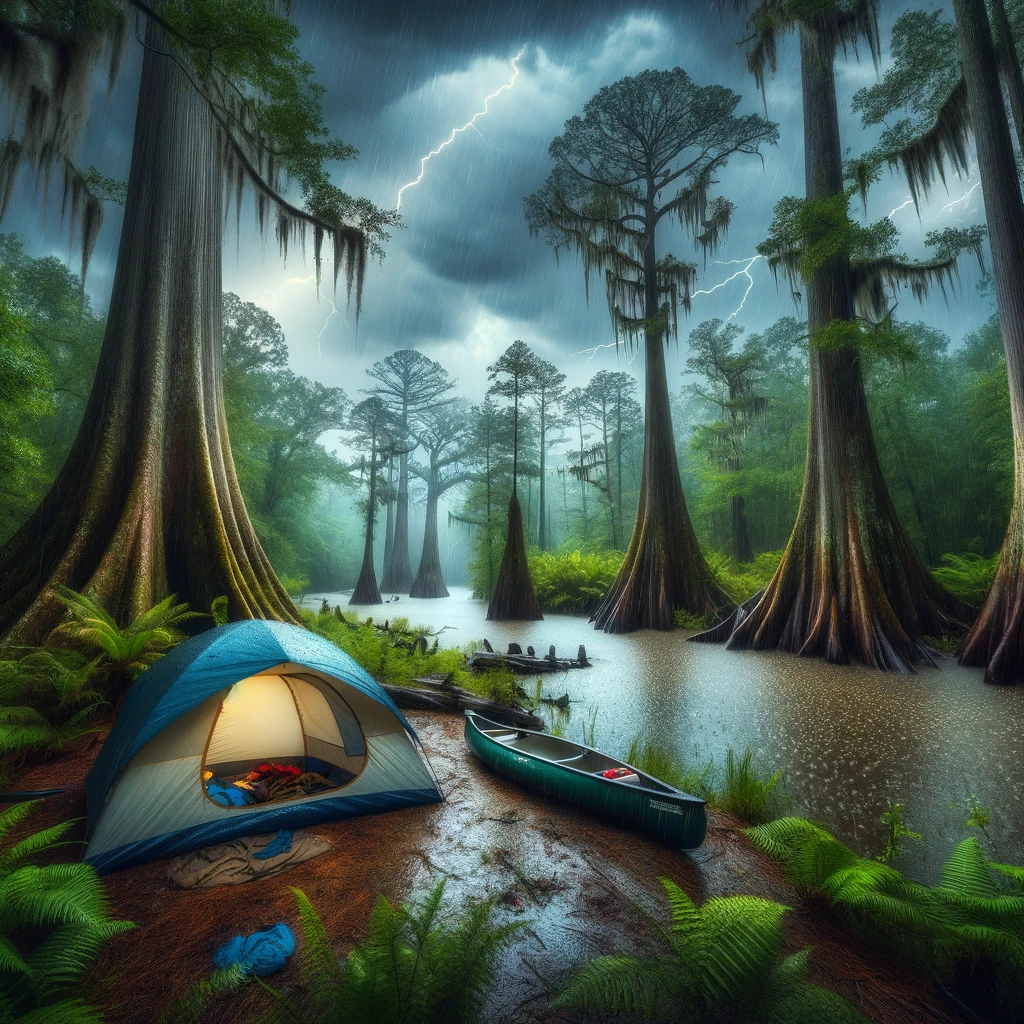Summer camping trips offer a fantastic opportunity to connect with nature and enjoy the great outdoors. However, the unpredictability of summer weather can present unique challenges for campers. From sudden thunderstorms to flash floods, preparing for severe weather is crucial for a safe and enjoyable camping experience. This comprehensive guide will equip you with the knowledge and strategies needed to navigate weather challenges during your summer camping adventures.
Understanding Summer Storm Patterns
Summer storms can vary greatly depending on your location and the time of year. Thunderstorms are common across many regions, often developing quickly on hot, humid afternoons. Hurricanes and tropical storms pose a significant risk in coastal areas during late summer and early fall. Flash floods can occur in any area but are particularly dangerous in mountainous regions or areas with recent wildfires.
Understanding the typical weather patterns of your camping destination is the first step in preparing for potential storms. Research the local climate and consult with park rangers or experienced campers familiar with the area to gain insights into common weather-related challenges.
Pre-Trip Planning and Preparation
Weather Forecasting
Before embarking on your camping trip, thoroughly check the weather forecast using reliable sources. Apps like Weather Underground or NOAA Weather Radar offer detailed, location-specific forecasts. Pay attention to the chance of precipitation, wind speeds, temperature fluctuations, and any severe weather warnings.
Emergency Kit Essentials
In addition to your regular summer camping essentials, pack a storm-specific emergency kit. This should include:
- Waterproof matches or a lighter.
- Emergency blankets.
- Extra batteries and power banks.
- A hand-crank or battery-powered weather radio.
- Waterproof containers for electronics and important documents.
- Extra tarps and rope for shelter reinforcement.
Campsite Research
Before choosing a campsite, research the area for potential weather-related hazards. Look for campsites on higher ground to avoid flash flood risks, and familiarize yourself with local evacuation routes and emergency procedures.
Choosing and Setting Up a Storm-Ready Campsite
Terrain Considerations
When selecting your campsite, avoid low-lying areas, dry riverbeds, and the bases of slopes where water might accumulate during heavy rain. Look for natural windbreaks like small hills or dense tree lines, but be cautious of camping directly under large trees that could pose a risk during high winds.
Tent Placement and Reinforcement
Set up your tent on slightly elevated ground with good drainage. Use sturdy, deep-set stakes and additional guy lines to reinforce your tent against strong winds. Consider using a ground cloth both inside and outside your tent for extra protection against moisture.
Creating a Lightning-Safe Environment
In areas prone to thunderstorms, follow the 30/30 rule: If you see lightning and can’t count to 30 before hearing thunder, it’s time to seek shelter. If camping in an open area, identify the lowest point nearby that isn’t prone to flooding as a potential shelter spot.
Storm Safety Protocols
Thunderstorm Safety
Avoid open areas, hilltops, and tall, isolated objects like lone trees during a thunderstorm. If caught in the open, crouch down with your feet close together and your head tucked to minimize contact with the ground.
Flash Flood Preparedness
Be alert to the signs of potential flash floods, such as rapidly rising water levels or distant rumbling sounds. Have a quick evacuation plan ready and move to higher ground immediately if flooding seems likely.
Hurricane and High Wind Procedures
If camping in an area where hurricanes are possible, stay informed about any developing storms and be prepared to evacuate early. During high winds, secure all loose items around your campsite and consider taking shelter in a sturdy building if available.
Technology and Communication
Utilize technology to stay informed about changing weather conditions. Set up weather alerts on your phone and consider bringing a portable weather radio for areas with poor cell reception. Establish a communication plan with someone not on the trip, including regular check-ins and emergency procedures.
Vehicle Safety in Storms
For those camping with RVs or cars, park your vehicle on high ground and away from trees that could fall. In severe weather, your vehicle can be a safer shelter than a tent, but be wary of flash flood risks.
Post-Storm Assessment and Recovery
After a storm passes, carefully inspect your campsite and equipment for any damage. Be cautious of fallen branches, flooded areas, and unstable ground. Have a plan for drying out wet gear to prevent mold and mildew.
Special Considerations for Different Camping Styles
Backcountry Camping
When camping in remote areas, be extra vigilant about weather changes and have multiple backup plans for shelter. Familiarize yourself with emergency signaling techniques in case you need to call for help.
Family Camping with Children
Educate children about storm safety in an age-appropriate manner. Have indoor activities prepared to keep them occupied during bad weather, and practice calm decision-making to help manage their anxiety during storms.
Environmental Awareness
Learn to read natural signs of impending storms, such as sudden temperature drops, increasing wind speeds, or unusual animal behavior. Understanding how storms affect local ecosystems can also enhance your overall camping experience and environmental stewardship.
Psychological Preparedness
Staying calm during severe weather is crucial for making good decisions. Practice stress-management techniques and discuss potential scenarios with your camping group before the trip to ensure everyone is mentally prepared.
Conclusion
While summer storms can be challenging, proper preparation and knowledge can ensure a safe and enjoyable camping experience. Remember, flexibility is key – sometimes the safest decision is to postpone or relocate your trip if severe weather is forecasted. By following these guidelines and staying informed, you’ll be well-equipped to handle whatever weather challenges your summer camping adventure might bring.
For more tips on enjoying your summer camping trip, check out our guides on cooling strategies for summer camping and managing bugs and insects. Happy camping, and stay safe out there!

Leave a Reply